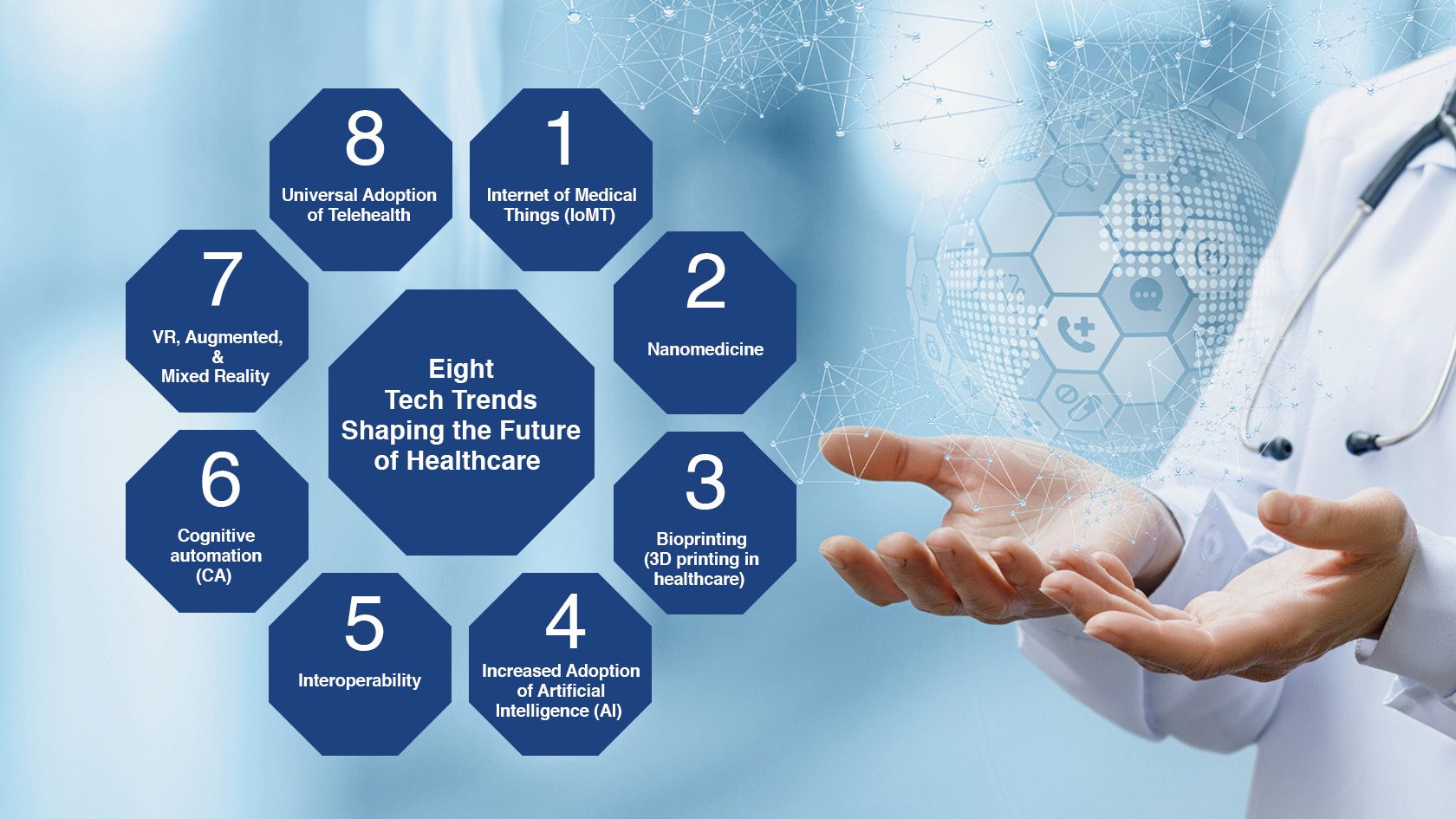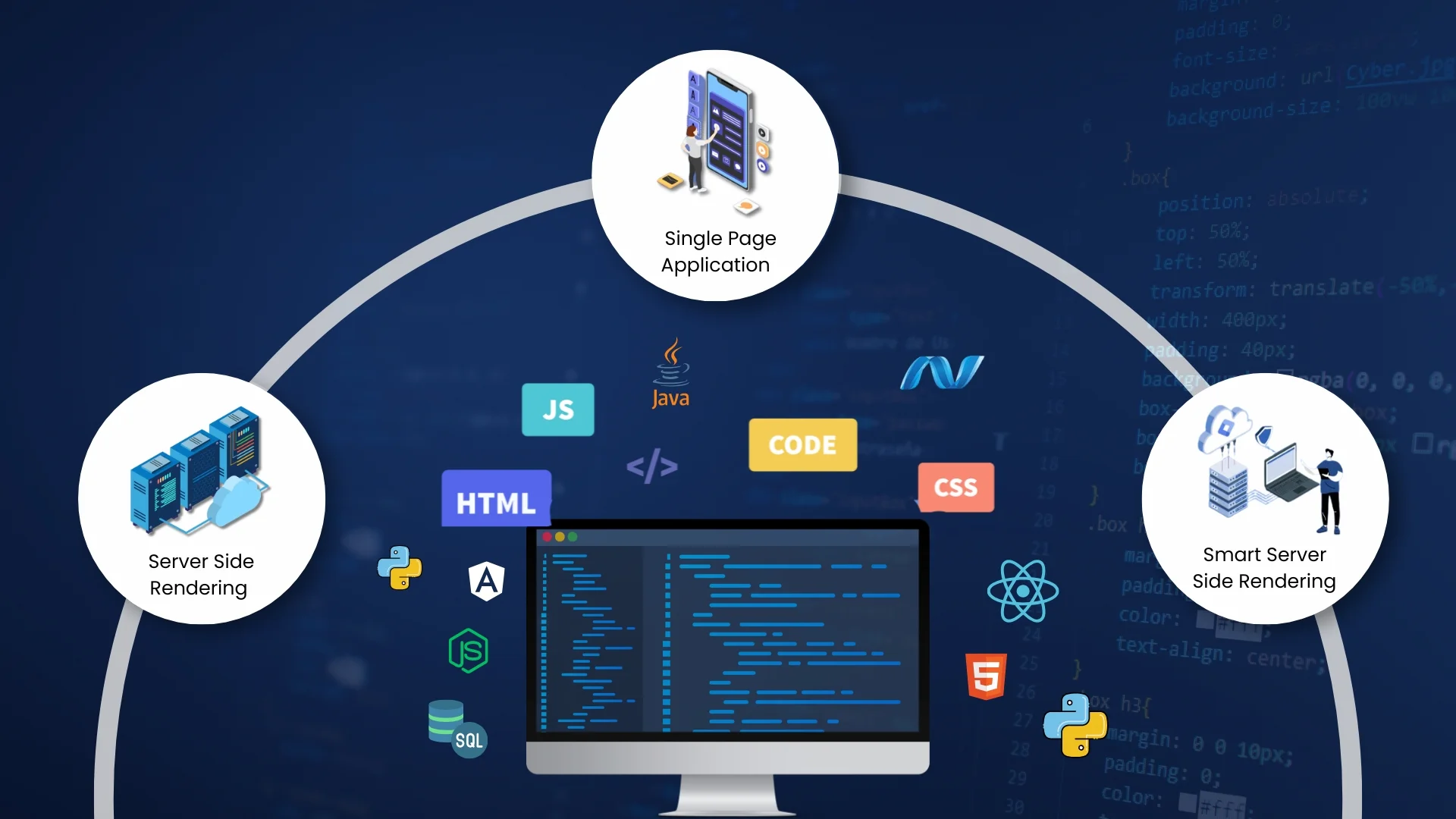Introduction
Technology has been instrumental in the exponential growth of the healthcare industry. Significant new discoveries and technologies are anticipated to bolster the healthcare sector in the coming years. The bulk of the fundamental shifts has yet to come. It is anticipated that emerging healthcare technologies will usher in a new era of revolutionary capabilities and game-changing discoveries. The healthcare industry is continuously evolving, from the broad acceptance of new technology, such as health wearables and medical robotics, to the ever-changing governmental approval landscape. In order to stay ahead of the competition, healthcare leaders must be knowledgeable of the most recent market trends. By doing so, they can determine what opportunities their organizations need to implement in order to grow their businesses, improve the delivery of care to patients, and enhance employee well-being. In this blog post, we’ll take a look at the most significant medical technology advancements and revolutions in healthcare technology that we anticipate in the near future.
Let’s look at some of the technological trends that will be shaping the future of the healthcare industry.
Table of Contents
Internet of Medical Things (IoMT)
In spite of the fact that IoMT is not a new concept in 2023, this industry is poised for explosive growth in the years to come. Numerous digital health trends are appearing in this sector, and each one has great applications for healthcare professionals and can save billions of dollars. According to Precedence Research, the global internet of things (IoT) in the healthcare market size is expected to reach around $960.2 billion by 2030, with a CAGR of 20.41% during the forecast period of 2022 to 2030.
The Internet of Medical Things (IoMT) refers to the growing network of interconnected medical devices and applications that share data with hospital computer networks and patient records. Internet of Medical Things (IoMT) is based on machine-to-machine communication, which is made possible by Wi-Fi-enabled medical devices. These IoMT devices are connected to cloud platforms, such as Amazon Web Services, where recorded data can be stored and analyzed.
The IoMT paves the way for a dramatic change in the level of consciousness of patients. With IoMT devices such as Point-of-care devices, Smart pills, also known as smart drugs or digital pills, Personal emergency response systems (PERS), Clinical-scale wearables, Consumer-scale wearables, In-hospital devices and monitors range from colossal machines such as MRI and CT scanners to devices with smart apps that aid in patient monitoring, and personnel and supply management, all these IoMT devices in tandem with AI have the potential to bring drastic transformation in the healthcare sector in the years to come.
Nanomedicine
It may seem far-fetched at the moment, but nanotechnology is already making its way into our everyday lives. By the end of 2021, the world had heard the incredible news that scientists had developed miniature organic robots (termed xenobots) with the ability to multiply themselves. It is reasonable to expect a plethora of ground-breaking advances in nanomedicine in the year 2023.
Nanomedicine is the use of nanoscale (microscopically small) materials and objects, such as biocompatible nanoparticles, nanoelectronic devices, and even nanorobots, for specialized medical goals and manipulations, such as the diagnosis and treatment of living organisms. Research and development in the field of nanotechnology, along with related concepts like nanomaterials, nanostructures, and nanoparticles, has recently emerged as a top priority. The production and use of materials and devices on the nanoscale scale, has numerous current uses in electronics and other areas.
The biggest hopes, however, rest with its potential applications in biotechnology and health, which may have a significant bearing on the health of future societies. Nanomedicine is a new field that combines nanotechnology and medicine to create better and more effective treatments. To interact with human cells, nanomedicine involves shrinking nanostructures to the same size as biomolecules. By triggering the body’s natural repair mechanisms, this method provides a wide range of novel diagnostic and “smart” therapeutic options. Diseases including cancer, diabetes, Alzheimer’s, Parkinson’s, and cardiovascular illnesses will be easier to detect and treat early on. This could pave the way for the practice of preventive medicine.
Bioprinting (3D printing in healthcare)
In the healthcare sector, 3D printing is not a novel notion. In the late 1980s, the creation of the first commercial bioprinter and 3D printer began. However, capabilities, applications, and demand have accelerated in recent years due to increased financing and technological innovation. With constant study and development in the field, 3D printing has become increasingly sophisticated with each passing day in terms of speed, precision, capabilities, and applications.
Bioprinting, also known as 3D bioprinting, is the process of using 3D printing in conjunction with biomaterials to create artificial versions of biological structures such as tendons, ligaments, bones, and joints. In addition to these fields, 3D bioprinting has found use in the fields of dentistry, device imitation, anatomy model creation, and pharmaceutical development and research.
There are many factors that will contribute to the rapid expansion of 3D printing in healthcare over the next few years, including advances in technology, an increase in chronic conditions, greater compliance in the drug development process, a growing global elderly population, a greater need for organs, and the involvement of companies in the field. The advent of more advanced 3D printing and bioprinting technologies could significantly alter the face of medical practice. More and more advances are being made in the use of 3D printers by biomedical researchers, engineers, and doctors to create custom prosthetics, assistive devices, and implants for their patients.
Increased Adoption of Artificial Intelligence (AI)
Every business imaginable is influenced by artificial intelligence, which is everywhere. Artificial intelligence (AI) has progressed from technology incubators and R&D centers to a field with enormous potential. Numerous healthcare companies are currently piloting AI in various capacities, including diagnosis, AI-guided surgery, enhancing patient care using data-driven clinical decision-making, optimizing healthcare system procedures, and more.
The essence of artificial intelligence in healthcare is that providers can use it in conjunction with machine learning to collect and analyze medical data. Consequently, AI and associated technologies will continue to play a significant role in future healthcare technology trends as they are increasingly implemented in a variety of healthcare domains, including:
Patient care: In order to diagnose, investigate, and aid with patient care, doctors use AI systems for data analysis and decision-making. In order to aid other healthcare professionals and public health researchers in their jobs, artificial intelligence applications provide statistics on relevant data. With such intelligence, it becomes easier for medical professionals to decide the next course of action, improving the precision of the prognosis and the standard of patient care.
Public Health Management: Public health’s major responsibility is to screen huge populations for illness prevention and early detection. AI can anticipate morbidity and mortality rates by evaluating data from the government, medical services, and other sources. Consequently, AI has the potential to contribute considerably to global public health as a tool for combating pandemics and epidemics.
Robotics to Automate Workflows: Now that robots are getting better at working with people, they can be taught to do a variety of jobs in hospitals. As more artificial intelligence features are added to their operating systems, they become smarter. In addition, the use of surgical robots improves visibility, allowing doctors to make more accurate, minimally invasive cuts, sutures, etc. Physical robots are likely to incorporate further advances in artificial intelligence for healthcare in the future.
ML in Pharma and MedTech: New medicines will be found with the help of artificial intelligence in the pharmaceutical business. Artificial intelligence (AI) and machine learning (ML) techniques are being used in a wide variety of cutting-edge projects to improve the efficiency and accuracy of chemical experimentation and medical drug research, such as in the modeling and simulation of molecules and chemical reactions in complex, multi-factor environments. Numerous tests can be conducted virtually, allowing scientists to eliminate costly onsite studies with reagents and high-tech lab equipment. Additionally, it accelerates the discovery of fundamental scientific advances.
Interoperability
For providers, interoperability is a top concern in order to integrate patient data from within and outside the system and to merge clinical and administrative data to better serve the needs of their patients and their businesses. It is typical for each healthcare organization to maintain its own database containing the medical histories of its patients. With this strategy, patients are required to undergo complete diagnostics each time they consult a new healthcare provider, resulting in double spending on recurrent treatments.
Interoperability necessitates the creation of a universal database that can be accessible by all healthcare organizations serving a specific patient. Since the systems of the human body are interconnected, a comprehensive medical picture can lead to significantly better outcomes than a limited set of data that consists of a few reported symptoms but not the underlying causes of health issues.
Healthcare interoperability initiatives have the potential to reach a new level in 2023 with strong backing from the government and investors. For the development and expansion of open systems, cutting-edge software technologies such as platform integration and APIs will be leveraged. Furthermore, the medical industry is likely to use blockchain as a storage medium for patient health records by the end of the decade.
Cognitive automation (CA)
It is essential to highlight cognitive automation (CA) as a cutting-edge medical innovation. Cognitive automation is the next step towards true digital transformation. It is one of the emerging IT market trends in healthcare, but the technology bundle and its applicability are set to transform the administration of a whole industry radically. Incorporating RPA’s successes, it goes beyond automating routine tasks by simulating human actions. It is the electronic equivalent of a central nervous system for a healthcare facility.
Cognitive automation is blurring the lines between AI and human behavior by including the human element in these processes. Cognitive automation is a branch of AI that attempts to mimic human intellect through the use of state-of-the-art tools, including natural language processing, emotion recognition, data mining, and cognitive reasoning. In layman’s terms, cognitive automation is the application of artificial intelligence to the problem-solving process.
CA basically employs ML algorithms to increase the speed with which business decisions are made while also capitalizing on the automation features offered by existing software vendors. Decision-makers may now receive ideas that are ready for acceptance and are backed by current facts, despite the fact that the processing of zettabytes of data may take only seconds.
VR, Augmented, and Mixed Reality
One of the most exciting developments in healthcare IT is computer-generated or augmented reality, which holds great potential for enhancing medical diagnosis and education.
Digital Twin Technology in Healthcare – With mixed reality, you may interact with both virtual and physical objects at the same time (the so-called creation of a digital twin). The technique can also be used to create virtual replicas, or “digital twins,” of physical products for the purpose of testing them in a simulated setting. When it comes to approving proposed medical devices, biocompatible materials, or prosthetics, this process is unmatched. Designing and developing medical technology prototypes can be done more quickly and at a lower cost.
By using digital twins, physical samples or prototypes are no longer required for testing in the lab. Instead, medical engineers can design a virtual model of an object that is both physically and geometrically accurate and then test it in a simulated environment. Remote surgery and other forms of distant operation facilitated by remotely managed healthcare equipment can also benefit from this approach. The digital twin approach can reduce the cost and time required to produce complicated medical goods, as well as help anticipate and address any issues that arise during the process.
Augmented reality for medical education and decision-making- Virtual reality technologies immerse users in simulated or computer-rendered environments. This can help medical students hone their skills without ever setting foot in a hospital or meeting a real patient by immersing them in virtual environments that are remarkably like the real thing. With augmented reality solutions, an additional layer of computer-rendered information or virtual objects is superimposed on the real world. Augmented reality allows students or caregivers to obtain information and reports while dealing with patients or without abandoning their current operations. This can be done hands-free, by voice command, or by having supplementary data appear automatically.
Universal Adoption of Telehealth
The widespread diversity, universality, and expansion of digital communication channels have begun to have an effect on the healthcare industry. The emergence of telehealth as a new method of transmitting medical information and delivering healthcare data remotely has facilitated its widespread adoption. It involves the use of the Internet, videoconferencing, streaming services, and other communication technologies to provide healthcare services remotely. Also included in telehealth is distant education for patients and medical specialists.
In the year 2021, telehealth has attained widespread acceptance and has become the norm. Advanced clinics are already doing virtual consultations with patients. In the future, this mode of communication will receive complete regulatory permission and supplant conventional in-house consultations. In the coming years, the development of 5G wireless technology will also expand the chances for the rapid expansion and widespread use of telehealth.
Conclusion
This concludes our look at the eight trends that will propel the healthcare industry’s digital transformation in the coming years. These technological trends represent the future of healthcare technology. The increasing use of Cognitive automation (CA), Interoperability, the Internet of Medical Things (IoMT), bioprinting, Nanomedicine, health apps, virtual reality (VR), artificial intelligence (AI), robots, and telehealth has enabled healthcare organizations to meet the rising demand for high-quality and safer healthcare services. In addition, these developing trends in healthcare have put medical practitioners in a better position to manage in-hospitalization and post-hospitalization and to equip patients with health-related knowledge. Partner with Sparity to take advantage of our industry-specific digital transformation services that will place you at the forefront of innovation, supported by the most cutting-edge technological solutions.














